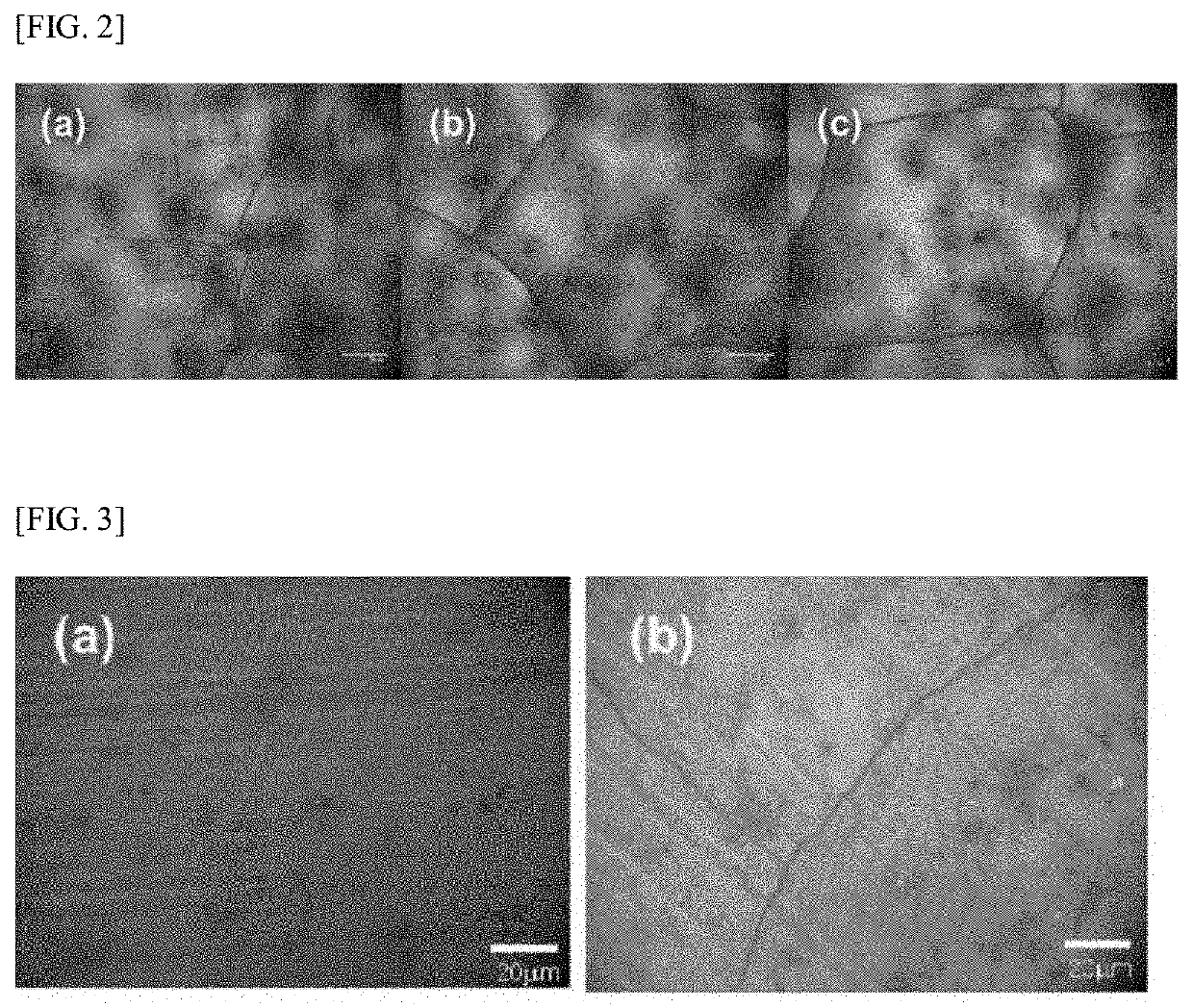Surface hardening method using post heat treatment of aluminum alloy oxide layer
- Summary
- Abstract
- Description
- Claims
- Application Information
AI Technical Summary
Benefits of technology
Problems solved by technology
Method used
Image
Examples
example 1
[0055]First, a 30 μm film was formed on an Al5052 specimen in a −3° C. electrolytic bath containing 20% sulfuric acid, and then the specimen was subjected to sealing treatment by being immersed in an 80° C. sealing solution for 20 minutes. As a result of thermally treating the specimen at 100° C. for one hour, 200° C. for one hour, or 300° C. for one hour, it was observed that cracks were generated on a surface of the film as shown in the photomicrographs of FIG. 2.
[0056]FIG. 2A is a photomicrograph showing the result of heat treatment performed at 100° C. for one hour, FIG. 2B is a photomicrograph showing the result of heat treatment performed at 200° C. for one hour, and FIG. 2C is a photomicrograph showing the result of heat treatment performed at 300° C. for one hour.
[0057]Therefore, it can be seen that the use of such a 5000 series aluminum alloy is undesirable, since cracking occurs as shown in FIG. 2.
example 2
[0058]First, a 50 μm film was formed on an Al6061 specimen in a −5° C. electrolytic bath containing 17% sulfuric acid, and then the specimen was subjected to sealing treatment by being immersed in an 83° C. sealing solution for 20 minutes. After thermally treating the specimen at 280° C. for 120 minutes, the hardness and withstand voltage of the heat-treated material were measured.
[0059]The hardness of the heat-treated material was measured four times, and the results were 416, 424, 401, and 412 HV. The withstand voltage of the heat-treated material was measured four times, and the results were 1,212, 1,666, 1,410, and 1,461 V.
example 3
[0060]First, a 30 μm film was formed on an Al6061 specimen in a 3° C. electrolytic bath containing 17% sulfuric acid, and then the specimen was subjected to sealing treatment by being immersed in an 83° C. sealing solution for 20 minutes. After thermally treating the specimen at 280° C. for 120 minutes, the hardness of the heat-treated material was measured.
[0061]The hardness of the heat-treated material was measured four times, and the results were 390, 432, 401, and 435 HV.
PUM
| Property | Measurement | Unit |
|---|---|---|
| Temperature | aaaaa | aaaaa |
| Temperature | aaaaa | aaaaa |
| Density | aaaaa | aaaaa |
Abstract
Description
Claims
Application Information
 Login to View More
Login to View More - R&D
- Intellectual Property
- Life Sciences
- Materials
- Tech Scout
- Unparalleled Data Quality
- Higher Quality Content
- 60% Fewer Hallucinations
Browse by: Latest US Patents, China's latest patents, Technical Efficacy Thesaurus, Application Domain, Technology Topic, Popular Technical Reports.
© 2025 PatSnap. All rights reserved.Legal|Privacy policy|Modern Slavery Act Transparency Statement|Sitemap|About US| Contact US: help@patsnap.com


